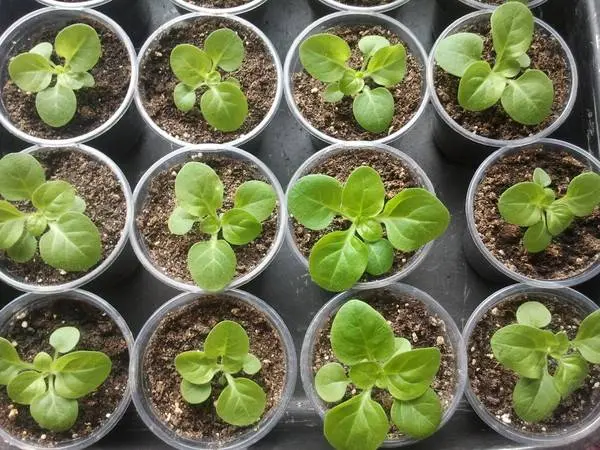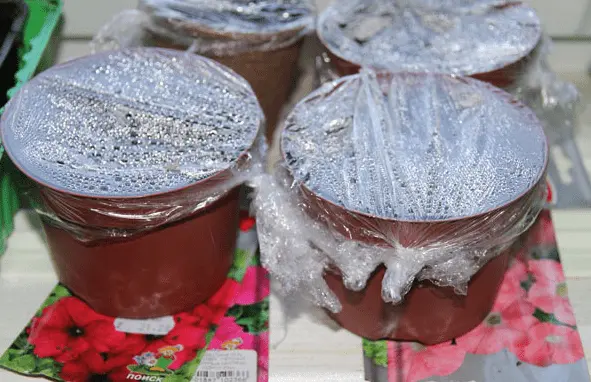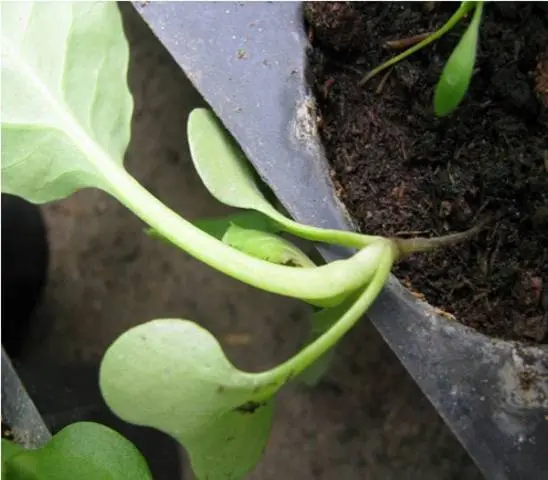Contents
A blooming petunia is a very beautiful decorative flower that can grow with equal success both in open ground and in various pots and planters. Adult flowers are quite unpretentious and will not require special attention from the gardener. Unfortunately, this cannot be said about young plants. Petunia seedlings are very capricious and, without proper care, will quickly begin to hurt and die. Below we will talk about the most common causes of the death of petunia seedlings.

Causes of seedling death
There are quite a few reasons why petunia seedlings fall and die. Most often they are associated with a violation of the conditions of care or with the defeat of young plants with various fungal diseases. Among all the reasons leading to the death of petunia seedlings, the most basic can be distinguished:
- low air humidity;
- defeat with a black leg;
- chlorosis;
- problems with the root system.
Let’s take a closer look at each of these reasons.
Low air humidity
For petunia seedlings, high humidity is very important. Moreover, it is important not only for young shoots, but only for planted seeds. If the petunia seeds are not provided with high humidity, then they simply will not sprout.
Very often, when only hatched sprouts appear, the gardener hurries to remove the film from the planting container, while making a huge mistake. As a result of such actions, young shoots are deprived of a moist environment and become weak and unviable. Often they cannot even get rid of the seed coat.

There is only one way out of this situation – to increase the humidity of the air. Petunia shoots should be covered again with film or glass, thus reducing the flow of dry air. At the same time, once a day, a container with petunia seedlings must be ventilated.

If the petunia seedlings continue to grow, but will not shed their seed coat, then they will have to be helped. Use tweezers or a thin needle for this.
Blackleg defeat
The main reason why petunia seedlings die is a fungal disease known to almost all gardeners as a black leg. At the same time, at first, the petunia seedlings look quite healthy and grow well. But then it falls sharply and does not rise any more.

Visually, the defeat of the black leg can be determined by the thin base of the stem and its characteristic black color. That is why the disease became known as the black leg. The black leg is caused by various types of mold fungi that are found in the upper layers of the soil. They are present in any land, but up to a certain point they are in hibernation. As soon as the external conditions become favorable, mold fungi become active and begin to infect any plants in their reach. Activation and further reproduction of fungi that cause a black leg occurs when:
- strong humidity;
- warm earth;
- dense planting of seedlings;
- acidic soil.
It is easy to see that all these points are similar to the conditions necessary for the growth of petunia seedlings. That is why the prevention of the black leg should not be ignored. Preliminary disinfection of the earth and daily airing of petunia seedlings will help to avoid the black leg. But if suddenly, despite these actions, the black leg still struck the seedlings, the first thing to do is to remove the affected plants without regret. Then it is recommended to completely replace the soil in which the seedlings grow.
If, after removing all diseased plants and transplanting, the black leg continues to kill seedlings, then you can resort to chemical control. To do this, you need to prepare a solution that makes the soil unsuitable for molds. Such a solution can be prepared from potassium permanganate or from 40% formalin.
Problems with the root system
Problems with the root system can be suspected only when the seedlings first grew normally, and then abruptly stopped growing and began to wither.
Problems with the root system of petunias can arise both as a result of improper watering and inappropriate temperature conditions, and as a result of a banal lack of space for the roots. If, apart from a sharp wilting on the seedlings, there are no signs of fungal diseases and the temperature regime is at the recommended values, then it is worth taking the seedling out of the planting container and inspecting its roots.

If the roots have grown strongly, then the petunia seedling needs to pick up a container with a large volume. The first few weeks after transplantation, the young plant will adapt to new conditions, so it is better to postpone top dressing for this time. But after one or two weeks, it is recommended to feed the transplanted petunia seedling with a complex fertilizer, which includes phosphorus and boron. These substances will contribute to the rapid growth of the root system, which has experienced stress from lack of space and from subsequent transplantation.
Chlorosis
Chlorosis should be discussed only when the petunia seeds have sprouted safely, but the new leaves on the seedlings are not green, but yellow.
Chlorosis is a very insidious disease that can occur both in young seedlings and in mature seedlings just before planting in the ground. If left unattended, chlorosis will inevitably lead to the death of seedlings. The main cause of this disease is iron deficiency in the plant. It can occur due to poor soil composition or due to a weak root system that is unable to absorb iron from the soil.

In the fight against chlorosis, foliar top dressing will be the best remedy. Thanks to her, iron will immediately fall on the leaves of petunia seedlings and will be absorbed faster. From iron-containing preparations, iron chelate, Ferovin and Micro Fe show good results. If it is problematic to get them, then you can water or spray the petunia seedlings with a light solution of iron sulfate. You can also use conventional complex fertilizers, which include iron.
If the blooming seedlings of petunia fell ill with chlorosis, then the buds must be removed. This measure will allow the plants to save the internal forces that they would have spent on flowering. With the adoption of timely measures at the initial stage of the disease, chlorosis can be cured quite quickly. A longer time will be required in the treatment of advanced chlorosis, but the outcome will also be favorable. At the same time, yellowed petunia leaves do not need to be removed. They can regain their color after two to three weeks.
Conclusion
Petunia seedlings can be compared to a capricious child who needs constant attention and care. So that she does not die before landing in open ground, the gardener will have to constantly monitor her condition, noticing even minor changes. After all, it is easiest to cope with any disease at the initial stage, and it is even better not to allow it at all.









